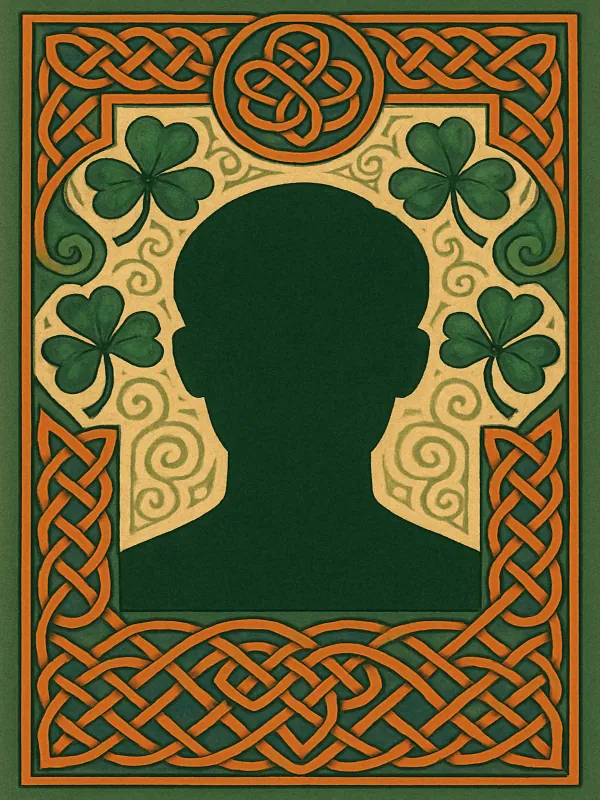Rev. James Whitelaw
Biography

Whitelaw, James (1749–1813), clergyman, statistician, and philanthropist, was born in Co. Leitrim; nothing is known of his family. He was educated in Cavan by Rev. Lewis Kerr before entering Trinity College, Dublin (8 July 1766), becoming a scholar (1769), and graduating Bachelor of Arts (1771). After leaving college he became a tutor in the household of Anthony Brabazon, 8th earl of Meath, by whom he was appointed, first, to the living of St James in the liberties of Dublin and then to the vicarage of St Catherine’s, Dublin; the latter had 20,000 parishioners and housed the largest proportion of Dublin’s protestant poor. Because Whitelaw felt his voice and manner were unsuited for preaching, he concentrated on pastoral duties. The parish administration of St Catherine’s was in a run-down state when he took charge, so he instigated five chancery suits and entreated parishioners of all denominations to attend vestry meetings in order to win back the parish’s traditional rights. As a result the parish rent rose from £50 to £700 a year, and the parish school (which originally housed twenty to thirty day pupils) clothed and lodged fifty girls. He was always active at times of distress, and when required was among the first to form a subscription for his parishioners’ relief.
In 1798, with the approbation of the government, he decided to compile a census of the population of Dublin. His object was to encourage improvement in policing, social conditions, industry, and education; he also sought to develop a mathematical system that could be used to calculate the populations of other comparable European cities. (In 1795 he had submitted ‘An essay on the best method of ascertaining areas of countries of any considerable extent’ to the Transactions of the Royal Irish Academy, vi (1795)). The census was carried out in his own time and at his own expense but he was aided by the lord mayor of Dublin’s decree that due to the unsettled political conditions of 1798 a list of inhabitants be posted to the door of every house in Dublin. However, in the poorer sections of the city these lists were inaccurate. Whitelaw and his assistants therefore visited every house and personally inspected each individual, thereby ensuring that his return would have a high level of accuracy.
Gathering the information took ten hours a day for five months, with another five years compiling the information into tabular form. Whitelaw inquired into the number of houses, their stories, age, size, and state of repair, and situation in the street as well as the name and occupation of the proprietor and the number, sex, rank, and condition of all the inhabitants, whose number he calculated at 182,370. This is an early example of a systematic scientific approach to demography. The census was placed in Dublin castle for safety and was later transferred to the Irish public record office, where it was destroyed in the civil war (1922).
The full census was deemed too expensive to publish in its entirety, so Whitelaw summarised the information in An essay on the population of Dublin (1805), dedicated to the lord lieutenant, Philip Yorke, 3rd earl of Hardwicke, who had requested its publication after reading it in manuscript form. While acknowledging that Dublin’s overcrowding was not as severe as it had been in the mid-eighteenth century, Whitelaw argued that overcrowding, poverty, and general wretchedness were still very much in evidence. He blamed high rents, which the poor were not able to pay without sharing their homes with other families, and recommended that the worst homes be pulled down and factories and commercial buildings be removed from residential areas.
For the rest of his life he continued his commitment to the poor, irrespective of their religious adherence. In 1804 he circulated a letter advocating the founding of a school for apprentices. He then persuaded the trustees of Erasmus Smith’s bequest to spend £2,000 to erect an extensive school on the Coombe for poor children, with access for adults in the evening. In 1806 he became a member of the board of education, spent seven years investigating the state of Irish education, and was also a member of the committee of fifteen who superintended the charter schools in Ireland. On 1 November 1808 he was appointed to a committee of three to draw up a report on the state of the funds and management of the charter schools. He was also a commissioner to inquire into the conduct of the paving board in 1805.
During a period of mass unemployment in 1808 he formed a committee and divided the city into a number of districts in each of which a local committee of resident gentlemen was appointed to collect money. It was estimated by contemporaries that this initiative saved over 9,000 individuals from starvation. When a surplus of £1,200 was gathered,the Meath charitable loan was established to encourage industry. In its first five years of operation (1808–13), 2,735 applications were made to the managing committee and aid dispensed to 1,500 people. Whitelaw never received payment for his public services, so as a reward John Law, bishop of Elphin, made him (9 September 1809) prebend of Ballintubber, a benefice worth £1,000 a year (although he received little money from it due to arrears in tithe), while allowing him to continue to serve at St Catherine’s.
In 1800 he produced Parental solicitude (1800), an essay giving advice to parents (although he had no children from either of his two marriages), which he circulated gratis among his friends; he also published A system of geography, which included two sets of maps showing respectively the geographical features of the globe and the political distinctions. In his bid for perfection he travelled the entire inland waterway system from the Liffey to the Shannon, recording the position of every lock and bridge, giving Ireland the first accurate map of its canals. When the copies of the maps he ordered did not come up to standard, he learned the art of engraving and produced them himself.
Towards the end of his life he cooperated with John Warburton to write a History of the city of Dublin from the earliest accounts to the present time (1818). Warburton concentrated on Dublin’s past and Whitelaw on the modern section, detailing hospitals, asylums, schools, churches, literature, art, agriculture and manufacture, courts of law, public works, new buildings, and improvements. Both died while the work was still in progress, and it was finally completed and published in 1818 by Robert Walsh.
Whitelaw died (4 February 1813) of typhus, contracted while administering the sacraments at Cork St fever hospital. In recognition of his services to the state the government conferred a pension of £200 a year on his widow.
Works
- An Essay on the Best Method of Ascertaining the Areas of Countries of Considerable Extent (1795)
- Parental Solitude (1800)
- An Essay on the Population of Dublin (1805)
- History of the City of Dublin (1818)
- A System of Geography
References
Biography written Rosemary Richey for the Dictionary of Irish Biography (DIB).
Source: https://doi.org/10.3318/dib.009013.v1
DIB entry shared in line with Creative Commons ‘Attribution’ (CC BY) licencing.
